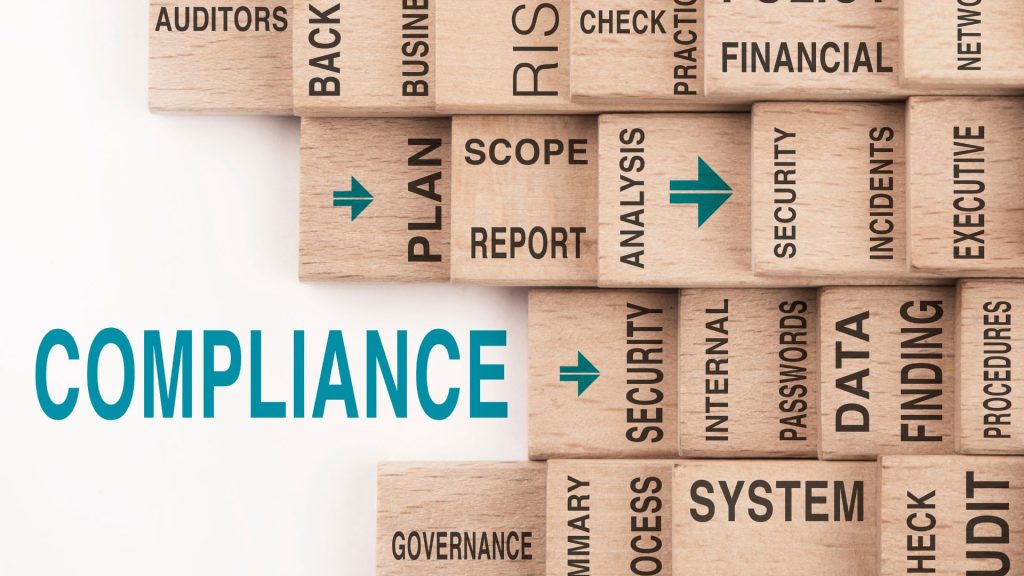Compliance is the analysis of the fulfillment of certain requirements by an enterprise. The current business climate is more complex and changeable than ever before. Even small enterprises, non-profit organizations, and state institutions face problems that have historically affected only the largest international corporations.
Current risks and legal requirements are numerous. They are constantly changing and rapidly affecting an organization and its sustainable development. To solve this growing list of issues of concern, progressive organizations adopted their vision of “Principled Performance” as a point of view and an approach to business that helps organizations achieve their goals reliably while addressing uncertainties and acting honestly.
The companies are paying attention to compliance processes and procedures and analyzing the fulfillment of certain applicable regulatory requirements. In modern business processes, compliance performs several very important functions. First of all, it allows determining a company’s compliance with the requirements imposed on counterparties to start cooperation.
Another no less important function is the analysis of compliance of the implemented business processes with the requirements of counterparties or sets regulatory requirements or internal rules.
Corporate Compliance
Corporate compliance allows identifying the potential compliance risks that may lead to the inability to carry out agreements and negatively affect mutual commercial relations or to the imposition of penalties. Due to checking procedures, there can be prevention of fraudulent or corrupt practices on the part of the staff or counterparties, avoidance of the imposition of sanctions, checking of the application of the staff internal rules of conduct, and reviewing and improving the procedure for handling customers’ request.
The development of modern information systems and databases, which have taken over all the routine work of searching for an initial analysis of information from various open registers, considerably contributes to the spread of compliance procedures.
However, no matter how perfect information systems are, they cannot yet replace human resources in solving the problems of analyzing the compliance of enterprises with certain requirements. Compliance risk assessment is the analysis of information in the context of regulatory requirements, detecting the interrelations that only the most advanced electronic systems are capable of capturing. The compliance solutions are designed to analyze customers’ solvency and “discipline.” Still, companies’ compliance and determining reliability remain a human prerogative because of many possible legal repercussions.
Compliance is always determined depending on the function, process, field, and purpose of regulatory inspection. Usually, conducting compliance consists of several basic stages. The expediency of dividing the procedure into stages is conditioned, first of all, by the need for analysis by a relevant field specialist and the specifics of the knowledge used at each stage.
Compliance is Specific Procedures
Specific procedures and the nature of conducted inspections are determined based on the enterprise’s needs and the agreement type to ensure compliance. At each of these stages, based on data obtained from internal and external information systems, risk points are determined, risk indicators that can tell about the reliability of a counterparty or possible problems in working with it. However, not all risks detected during compliance procedures can negatively affect the further operation of an enterprise. That is why each risk factor must be analyzed separately and in the context of its interrelation with other factors.
The final stage of any compliance procedure is to provide management with a report on all risks and problems detected during conducted inspections. Despite the variety of compliance procedures, their conduction is impossible without prior collection of information about a counterparty with the help of the information systems that aggregate information from different sources.
Final Thoughts
Compliance is the set of processes that an organization employs to ensure that employees and the organization as a whole follow internal and external rules and regulations. It could include your company’s written values, ethics policy, employee handbook, and legal compliance policies (like taxes and corporate reporting). It may include or be housed within a general counsel’s office in larger organizations. In smaller organizations, compliance often falls under the purview of the chief executive officer, chief financial officer, and head of human resources.




